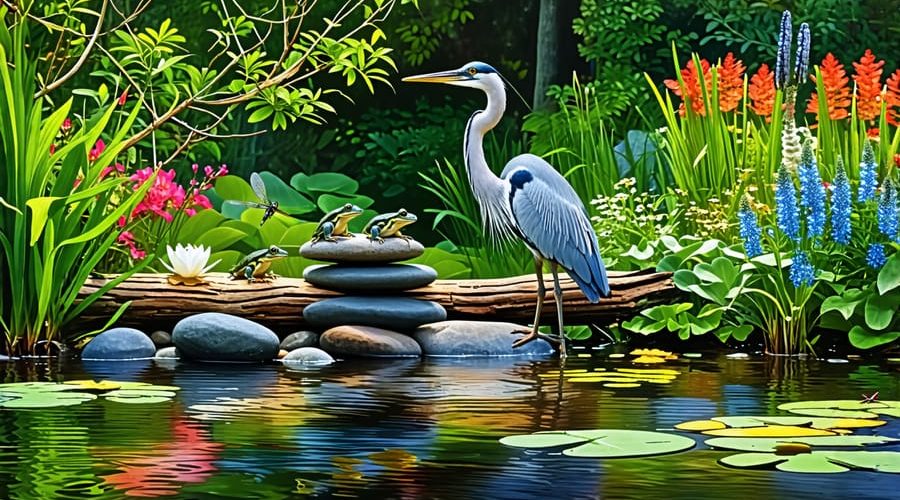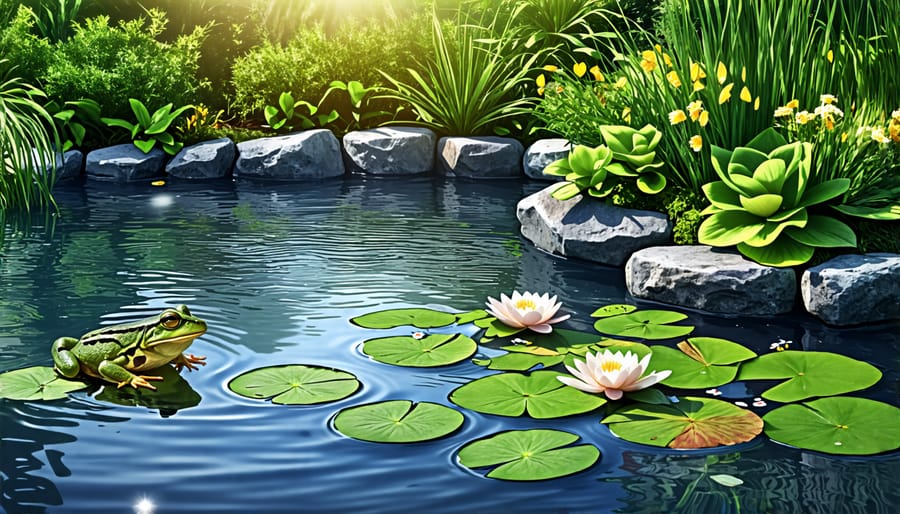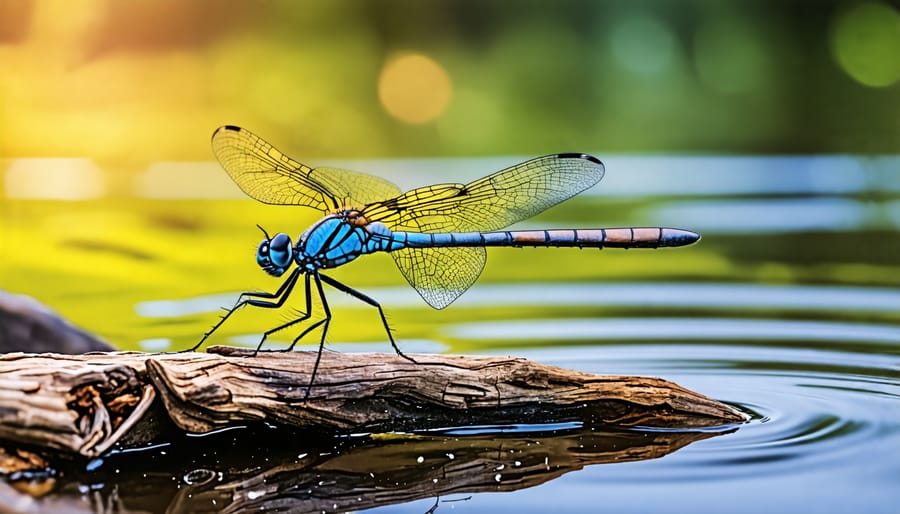
7 Natural Pond Edging Ideas to Attract More Wildlife
Plant marginal plants like rushes, sedges, and irises along the pond edge to create a natural, wildlife-friendly transition zone. Select rocks of varying sizes and colors to line the pond perimeter, providing basking spots for frogs and dragonflies while adding visual interest. Use coir rolls or pre-formed fiber mats to establish a stable, vegetated pond bank that attracts diverse wildlife. Partially submerge logs or driftwood along the edge to create perches and hiding spots for birds, turtles, and insects.
Benefits of Natural Pond Edging
Creates Wildlife Habitat
Choosing natural pond edging provides essential shelter and resources for various animals, transforming your water feature into a thriving wildlife habitat. Rocks, stones, and pebbles along the pond margins create nooks and crannies where amphibians, insects, and small mammals can hide from predators or bask in the sun. Allowing some grass, reeds, or other vegetation to grow along the edges offers a food source and nesting material for birds, dragonflies, and butterflies. Overhanging branches from nearby shrubs or trees provide perches for birds to survey the pond for a quick drink or meal. By keeping the edging as natural as possible, you’ll soon notice a diverse array of creatures making your pond their home.
Improves Water Quality
Allowing native plants to flourish along your pond’s edge not only creates a beautiful, natural look but also plays a crucial role in maintaining water quality. These marginal plants act as natural filters, absorbing excess nutrients from runoff that could otherwise lead to algae growth and imbalances in your pond’s ecosystem. Their extensive root systems also help stabilize the soil, preventing erosion and keeping your pond’s structure intact. By establishing a diverse range of native aquatic plants, you create a living buffer that supports clean, clear water while providing vital habitats for wildlife to thrive.
7 Natural Pond Edging Ideas
Stacked Stones
Stacking stones along your pond’s edge creates a rustic, natural look that seamlessly blends with the surrounding landscape. Select rocks of various sizes and shapes for visual interest, but ensure they have relatively flat surfaces for stability. Begin by placing the largest stones as the base layer, ensuring they are partially submerged in the pond’s edge for a secure foundation. Continue layering progressively smaller stones, fitting them snugly together like a puzzle. Use smaller pebbles to fill gaps and stabilize the structure. For added charm, incorporate driftwood or logs between the stones. The nooks and crannies formed by stacked stones provide perfect hiding spots for small wildlife, while the flat surfaces offer basking areas for frogs and turtles. Experiment with different arrangements until you achieve a visually pleasing, stable edge that enhances your pond’s natural beauty and attracts diverse wildlife.


Driftwood Border
Driftwood is a beautiful and natural way to edge your wildlife pond, creating an organic and textured look that seamlessly blends with the surrounding landscape. Collect weathered pieces of wood in various sizes and shapes, and arrange them along the pond’s margin to form a rustic border. As the wood decays over time, it provides a perfect habitat for beneficial insects and small animals, attracting them to your pond’s ecosystem. Driftwood also serves as a landing spot for dragonflies and a basking area for turtles and frogs. To enhance the natural appearance, tuck moisture-loving plants like ferns and mosses between the wood pieces, softening the edges and adding a lush, green touch. Experiment with different layouts and heights to create visual interest and vary the microhabitats around your pond. With driftwood edging, you can establish a unique and inviting environment that supports a thriving community of wildlife.
Planted Coir Rolls
To line your pond with pre-planted coir rolls, start by measuring the perimeter to determine how many rolls you need. Soak the rolls thoroughly in a bucket of water for about 15 minutes to ensure they’re fully hydrated. Next, place the saturated rolls along the pond’s edge, securing them with wooden stakes driven through the netting at regular intervals. Be sure to butt the ends of each roll tightly against one another for a seamless look. Once in place, you can further customize your pond margin by tucking additional aquatic plants into the coir fibers. Over time, the rolls will naturally degrade, allowing the established plants to root directly into the pond banks. This eco-friendly option not only provides an instant, lush border but also helps prevent soil erosion and creates a natural haven for wildlife to thrive.
Overhanging Logs
Partially submerged logs along the pond edge create an inviting habitat for amphibians and other small wildlife. Select logs with interesting textures and contours, such as those with protruding branches or hollowed sections. Position the logs so that they extend from the shore into the water, with about one-third of their length submerged. This allows creatures to easily move between land and water. As the logs gradually decay, they provide a natural food source for aquatic organisms. Mosses and lichens will also colonize the exposed portions, adding visual interest and additional microhabitats. Overhanging logs help to soften the pond edge, blurring the line between the water and the surrounding landscape. They also serve as basking spots for turtles and dragonflies, and perches for birds visiting the pond to drink or bathe. With time, these logs will seamlessly integrate into the pond ecosystem, enhancing both its aesthetic appeal and ecological value.
Pebble Beach
A pebble beach provides a gradual, shallow entry point that allows wildlife to safely access your pond. To create this natural-looking feature, start by excavating a gently sloping area along one edge of the pond. Line the slope with a layer of sand for stability, then cover it with a mix of smooth, rounded pebbles and gravel. Vary the sizes to mimic a natural shoreline, using larger stones near the water’s edge and smaller ones further up the bank. Pack the pebbles tightly to prevent them from shifting over time. Consider incorporating native aquatic plants along the margins to enhance the natural appearance and provide additional habitat for wildlife. Pebble beaches not only offer an inviting spot for animals to drink, bathe, and enter the water, but they also lend a visually appealing, organic texture to your pond’s design.
Boggy Planting Shelves
Creating planting shelves along your pond’s edge is a great way to accommodate moisture-loving marginal plants that thrive in shallow water. To build these shelves, start by digging a stepped ledge around the perimeter of your pond, about 6-12 inches deep and wide. Line the shelf with a layer of gravel or sand to provide a stable base for your plants. You can use rocks or bricks to create a border that will hold the soil in place. Fill the shelf with a mixture of pond soil and aquatic compost, creating a nutrient-rich environment for your plants to flourish. Choose a variety of moisture-loving marginal plants with different heights, textures, and colors to add visual interest to your pond’s edge. As these plants grow and spread, they’ll create a natural, lush border that attracts wildlife and enhances the overall beauty of your pond.
Woven Wattle Fencing
Weaving willow or hazel branches into a rustic fence around your pond creates a charming, natural border that doubles as a haven for wildlife. This traditional technique, known as wattle fencing, involves intertwining flexible branches between sturdy upright posts to form a low barrier. The woven structure provides numerous nooks and crannies where beneficial insects, amphibians, and small mammals can seek shelter or bask in the sun. As the wattle fence ages, it develops a weathered patina that blends seamlessly with the surrounding landscape. Planting moisture-loving perennials like ferns or irises along the base of the fence softens the edges and enhances the natural aesthetic. With a little patience and creativity, a woven wattle fence becomes a functional and attractive addition to your wildlife pond, offering both visual appeal and ecological benefits.
Conclusion
Incorporating natural edging into your wildlife pond not only enhances its aesthetic appeal but also creates a welcoming habitat for various creatures. By experimenting with different materials and combining techniques, you can craft a unique and inviting pond margin that seamlessly blends with your garden landscape. Don’t be afraid to mix and match edging ideas to achieve the perfect balance of functionality and beauty. Whether you opt for the rustic charm of logs and stones, the lush appeal of marginal plants, or the organic contours of a beach-inspired design, your pond edging will play a vital role in attracting and supporting local wildlife. So, embrace your creativity, explore the possibilities, and enjoy the rewarding experience of watching your wildlife pond thrive.
